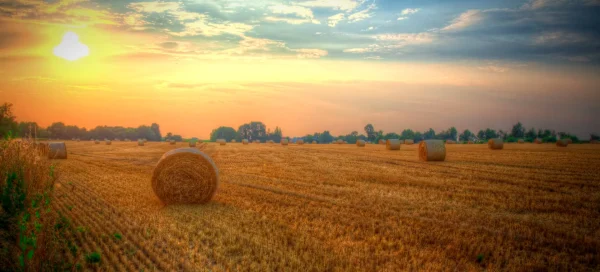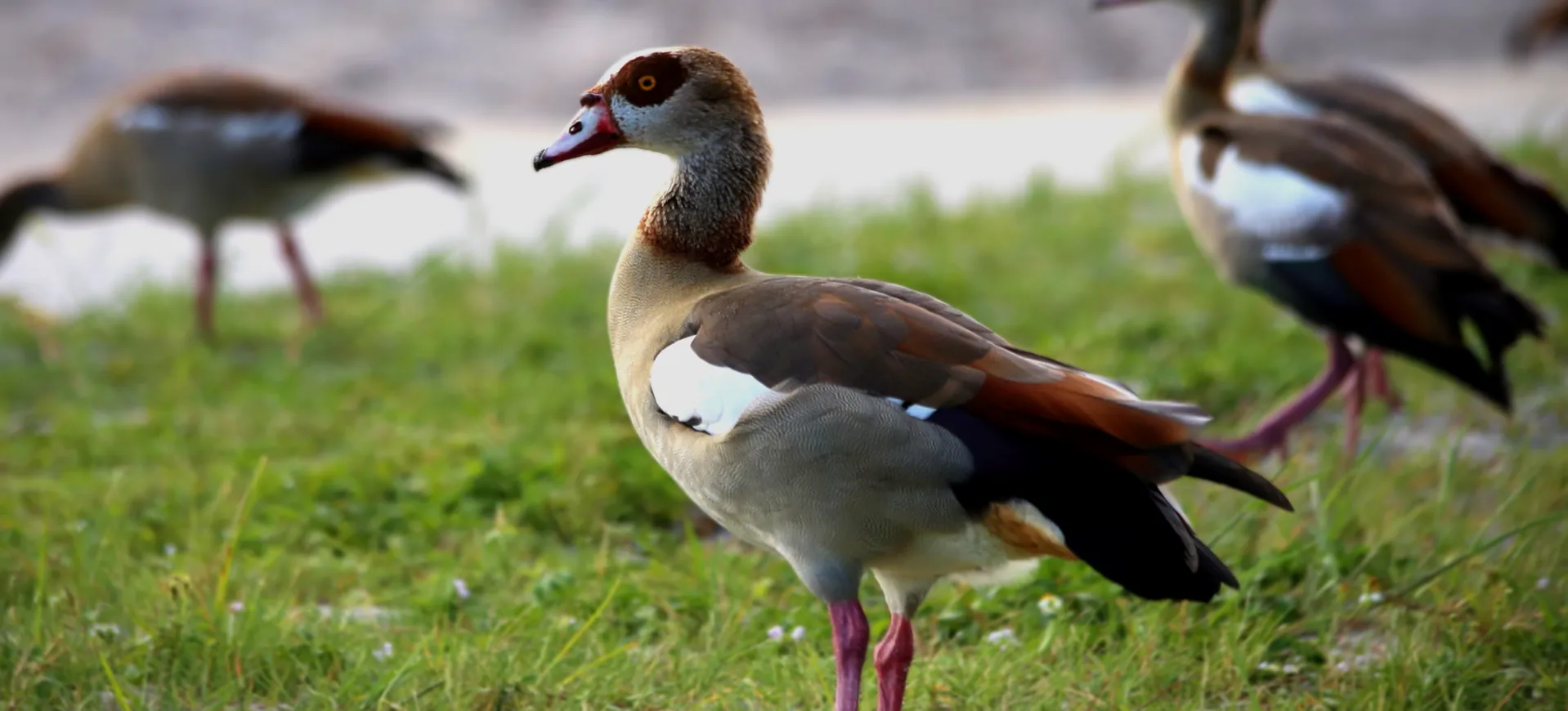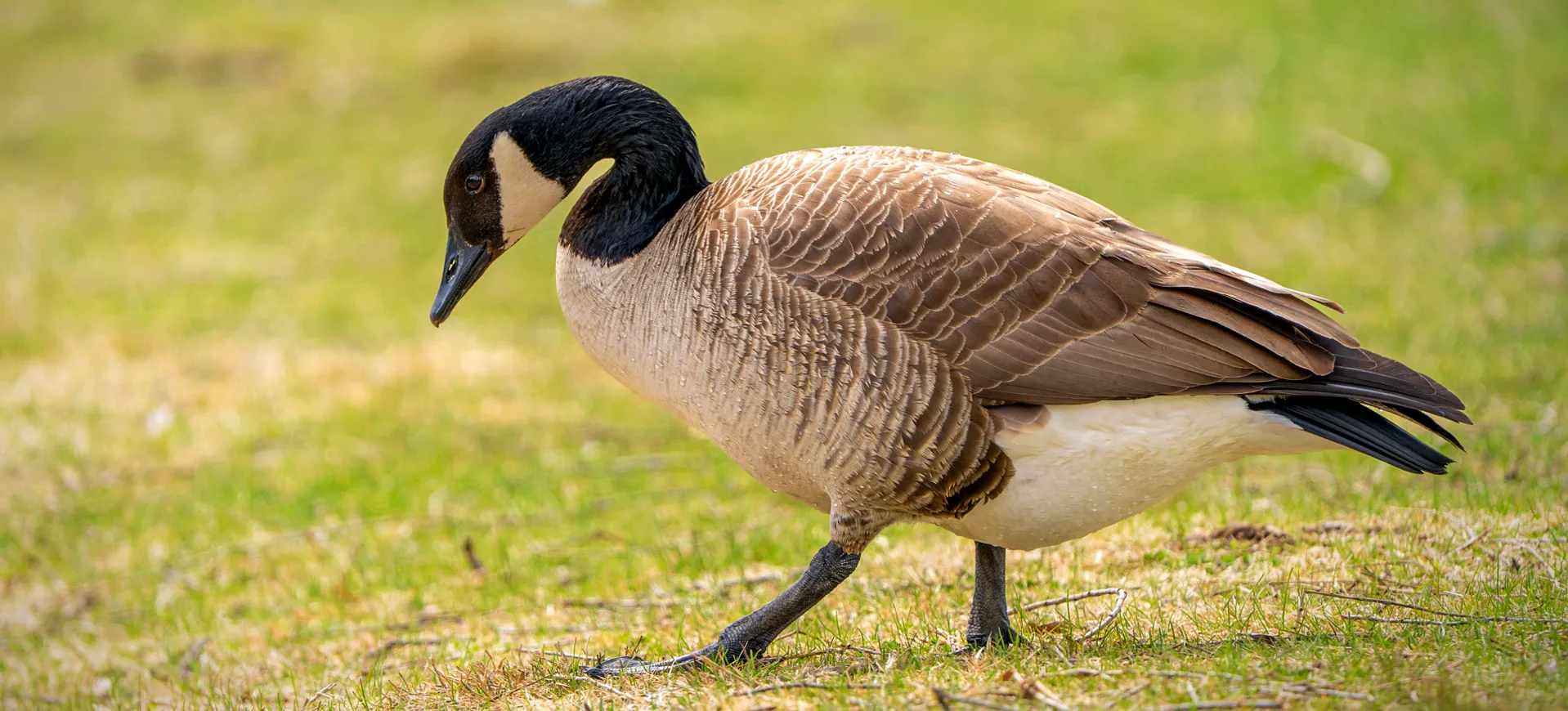Overview
Domestic ducks are common in rural and urban settings and are known for their distinctive quacking and waddling gait. Originating from wild mallard ancestors, they have been bred for various purposes, including meat, eggs, and ornamental reasons. These ducks come in various sizes and colors, varying significantly from their wild counterparts. They are known for their friendly and docile nature, making them popular in farmyards and as pets.
Ducks have been domesticated for centuries, with evidence of their use in ancient civilizations like Rome and Egypt. They play a crucial role in human agriculture, contributing to pest control, feather production, and even as pets. Domestic ducks are also known for their adaptability, thriving in diverse environments ranging from small backyard ponds to large commercial farms. Their social behavior and ease of care contribute to their popularity and significance in human culture.
Domestic ducks typically have a more robust body and may have lessened flight capabilities than their wild relatives. Selective breeding has led to various breeds with unique characteristics, such as the Pekin duck, known for its large size and white feathers. Domestic ducks often display a range of feeding behaviors, including dabbling in water for food and foraging on land. They also play a role in ecosystem balance by controlling pests and contributing to the nutrient cycle in their habitats.
Taxonomy
Kingdom
Phylum
Class
Order
Family
Genus
Species
Type
Physical Description:
Domestic ducks vary greatly in physical appearance, influenced by breed and selective breeding. Common characteristics include a broad body, short legs, and a wide, flat bill. They exhibit various colors and patterns, from Pekin ducks’ pure white to Mallard’s and Rouens’ varied hues. Some breeds, like the Indian Runner, are known for their upright posture, while others, like the Muscovy, have unique facial features.
In terms of size, domestic ducks are generally larger and heavier than their wild counterparts. This increase in size is particularly noticeable in breeds developed for meat production, like the Pekin. Their plumage can be either iridescent or dull, depending on the breed, and they may have different types of feathers, including down, which is highly valued in the textile industry. The physical appearance of domestic ducks is a direct result of human selection for specific traits, including feather color and pattern to body size and shape.

Lifespan: Captivity: ~12 Years

Weight: Male: 5-11 lbs (2.3-5 kg) || Female: 4-9 lbs (1.8-4.1 kg)

Length: Male & Female: 20-25 inches (51-64 cm)

Height: Male & Female: 15-20 inches (38-51 cm)

Wingspan: Male & Female: 26-33 inches (66-84 cm)
Characteristic:
Native Habitat:
Domestic ducks do not traditionally have a native habitat, as they are bred and raised by humans in various environments. However, they are most commonly found in farmyards, smallholdings, and backyard gardens. These environments typically include a water source, such as a pond or stream, and areas for foraging and nesting. Domestic ducks are adaptable to various climates, though they thrive best in temperate conditions with access to water and shelter.
While they can live in various settings, domestic ducks often require specific habitat conditions to maintain health and productivity. This includes clean water for swimming and bathing, safe nesting areas, and space for foraging. In more commercial settings, ducks may be housed in larger barns or enclosures, with their habitat designed to maximize production, whether for eggs, meat, or feathers. Domestic ducks’ habitat and living conditions can significantly impact their welfare, behavior, and productivity.
Climate Zones:
Biomes:
Biogeographical Realms:
Continents:
Countries:
Diet:
Diet & Feeding Habits:
Domestic ducks are generally omnivorous, feeding on various foods in their environment. In a natural setting, they forage for plants, small fish, insects, and various aquatic organisms, using their broad bills to filter food from water. In domestic settings, their diet is often supplemented with commercial feed, providing balanced nutrition for health and growth. Ducks also require regular access to water for drinking and bathing, essential for maintaining their feather condition and hygiene.
In addition to commercial feed, domestic ducks often enjoy a variety of foods, including vegetables, fruits, and grains. They are known for their appetite and can be enthusiastic eaters, often dabbling in mud and water to find additional food sources. Feeding behaviors vary among breeds; for instance, some breeds are more adept at foraging than others. Proper nutrition is crucial for their health, affecting everything from feather quality to egg production.
Mating Behavior:
Mating Description:
Domestic ducks have a variety of mating behaviors, which can vary by breed and individual temperament. Generally, mating season occurs in the spring, when water and food are abundant, and the weather is suitable for raising offspring. Male ducks, or drakes, often use elaborate courtship displays to attract females. These displays can include vocalizations, head-bobbing, and showing off their colorful plumage.
Once a pair is formed, mating occurs in water. The female will lay a clutch of eggs, typically ranging from 5 to 12, in a nest she constructs from grass, feathers, and other materials. After laying, the female incubates the eggs for about 28 days, rarely leaving the nest. The male may stay nearby to protect the nest or may leave to join other males.
Reproduction Season:
Birth Type:
Pregnancy Duration:
Female Name:
Male Name:
Baby Name:
Social Structure Description:
Domestic ducks exhibit a range of social behaviors, largely influenced by their environment and upbringing. In natural settings, ducks are social animals and often form small flocks, which provide safety and facilitate foraging. These flocks have a loose hierarchy, typically led by a dominant male or female. Within these groups, ducks communicate through various vocalizations and body language, which play a role in maintaining social bonds and establishing pecking order.
In domestic settings, the social structure of ducks can be more variable. On small farms or in backyard settings, ducks may form close-knit groups and exhibit strong social bonds. In larger commercial operations, the social dynamics can be more complex due to larger group sizes and varying environmental conditions. Regardless of the setting, providing adequate space and environmental enrichment is key to promoting healthy social interactions and reducing stress among ducks.
Groups:
Conservation Status:
Population Trend:
As domestic animals, ducks are not tracked for population numbers in the same way as wild species. Their population in captivity is widespread and varies greatly depending on the region and the purpose of breeding. In many parts of the world, ducks are a common sight on farms and in backyards, raised for their eggs, meat, or simply as pets. The domestic duck population largely depends on human breeding and farming practices.
In some regions, certain breeds of domestic ducks are more popular than others, influenced by local needs and preferences. For example, Pekin ducks are widely raised for meat production due to their large size and rapid growth rate. The conservation of domestic duck breeds is often a concern for agricultural and cultural heritage, with efforts made to preserve rare and traditional breeds. This includes maintaining genetic diversity and promoting sustainable breeding practices.
Population Threats:
The primary threats to domestic ducks are farming practices and habitat conditions. Overcrowding, poor nutrition, and lack of proper veterinary care can lead to health issues and decreased productivity. Predation by local wildlife or stray animals is also a concern, particularly for free-range ducks. Additionally, ducks are susceptible to various diseases, some of which can be transmitted to wild bird populations.
Environmental factors, such as pollution and climate change, can affect the habitats where domestic ducks are raised. Poor water quality in ponds and lakes can lead to diseases and impact the ducks’ health. Furthermore, in some regions, the abandonment or escape of domestic ducks into the wild can lead to ecological imbalances. Responsible husbandry practices and habitat management are key to addressing these threats and ensuring the well-being of domestic duck populations.
Conservation Efforts:
Conservation efforts for domestic ducks focus on sustainable and humane agricultural practices. These practices include providing adequate living space, ensuring proper nutrition, and offering regular veterinary care to maintain the health and welfare of the ducks. Educational programs targeted at farmers and backyard poultry enthusiasts are essential in promoting awareness of best duck care and breeding practices. Furthermore, organizations and breed associations play a crucial role in preserving the genetic diversity of domestic duck breeds, protecting them from genetic dilution and loss of heritage breeds.
In terms of their ecological impact, there are concerted efforts to prevent the integration of domestic ducks into wild bird populations. This involves public education about the consequences of releasing domestic ducks into natural habitats and strict regulations against the abandonment of pet ducks. Conservationists also work to manage feral duck populations, aiming to minimize their ecological footprint and the potential transmission of diseases to wild birds. Research into disease control and prevention is another vital component of these efforts, helping to mitigate the risks of outbreaks that could affect both domestic and wild duck populations.
Additional Resources:
Fun Facts
- Domestic ducks are descendants of the wild mallard, Anas platyrhynchos.
- The quack of a duck does echo, contrary to popular myth.
- Ducks have waterproof feathers due to a special oil they produce.
- A duck’s bill is packed with sensory receptors, which help them find food in mud and water.
- Some domestic ducks are capable of laying over 300 eggs a year.
- Ducklings imprint on the first moving object they see, which is often their mother.
- Domestic ducks have been used in rice fields for pest control.
- The Indian Runner duck is known for its upright posture and running gait.
- Ducks have three eyelids and can see in full color.
- The Muscovy duck is the only domestic duck breed not descended from the mallard.
















































































